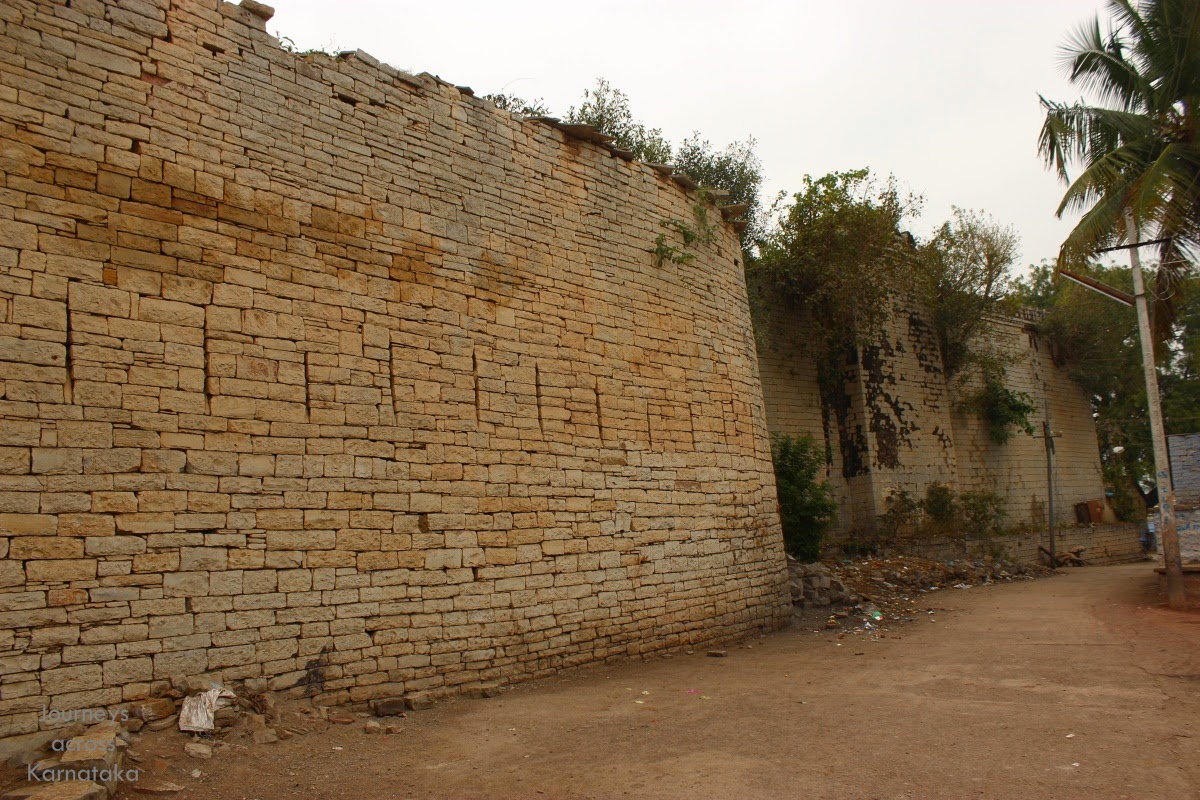The day which began with Buddha hill of Shahapur will come to an end at Khasa Matha of Gurmitkal, a Lingayath monastery. Buddha and Basaveshwara were both social reformers but of different time periods... more than thousand years between them. A book with the title "Buddha and Basava" written by Sri Kumara Swamiji of Tapovan, Dharwad has compared Buddha's and Basaveshwara's contribution to social development.
November 28, 2013
On the way back from Chandriki to Gurmitkal stopped at Khasa Matha. Generally I do not visit monasteries unless I'm asked to.. today my hosts Harisha and Papanna Alegar insisted on visiting this peaceful place. The Matha has a long history, it was established about 600 years back by Murugarajendra Mahaswami. The present seer of Khasa Matha is Sri Shantaveera Swami.
The gateway also has a balcony above the doorway. Probably that balcony is used by Swamiji to address disciples during special occasions. The balcony columns on the front is a unique work of sculpture fixed into it. It is a monolith sculpture; a 5" diameter cylindrical shaft about 3' in length with 3 grilled cages; each of the grilled cages holds a stone ball. However, only one of the shafts survives today.
Check out this video to see the unique sculpture. This boy, a resident of Khasa Matha shows the ball movement in the cage.
 |
| grilled cage and enclosed ball |
Moments before sunset.. shades of gold and pink light up the cloudy sky. The matha had a peaceful ambience.. a group of kids sitting on the floor in a circle reading their school books.. matha resident boys running about doing their chores, preparing for evening pooja. Oh what a place!
There's another courtyard which is much smaller. In the center is a stone cauldron, about 3' diameter and 2' high. Its hollow inside. The dent on outer surface gives it a special touch.. as though it fell down and got deformed. Probably thi cauldron was used to store water or oil originally, now its just a show-piece gracing the smaller courtyard.
Swamiji was yet to come out to for the evening. In the mean time I freshened up at the bathroom.. the cool water was refreshing. We waited few minutes in the open hall next adjoining the smaller courtyard before Swamiji showed up. This is Poojya Shri. Shantaveera Swamiji the present head of Khasa Matha of Gurmitkal.
Papanna being a regular visitor to this Matha introduced me to Swamiji and then I told about myself and how I happened to be sitting here.. thanks to Papanna. We spoke about the forts and weather among other things. One of the topics discussed was Kakalwar Samsthana. At the end of the discussion Swamiji presents Papanna a picture of Raja Lakshmanappa.
I told Swamiji about my plan to reach Shahabad tonight and requested to grant us leave. Swamiji and Papanna asked me to stay back for the night however since my plan was set and so was my cab's return to Dharwad, I had to leave.
The audience has grown with three other visitors, they were here to seek Swamiji's advice on something important. During this visit I did not get an opportunity to ask about Matha's history. Anyway, the moment I stepped in, I had a strong feeling my relationship with this Matha is going to be long one.. there will be more visits.
.........








































































